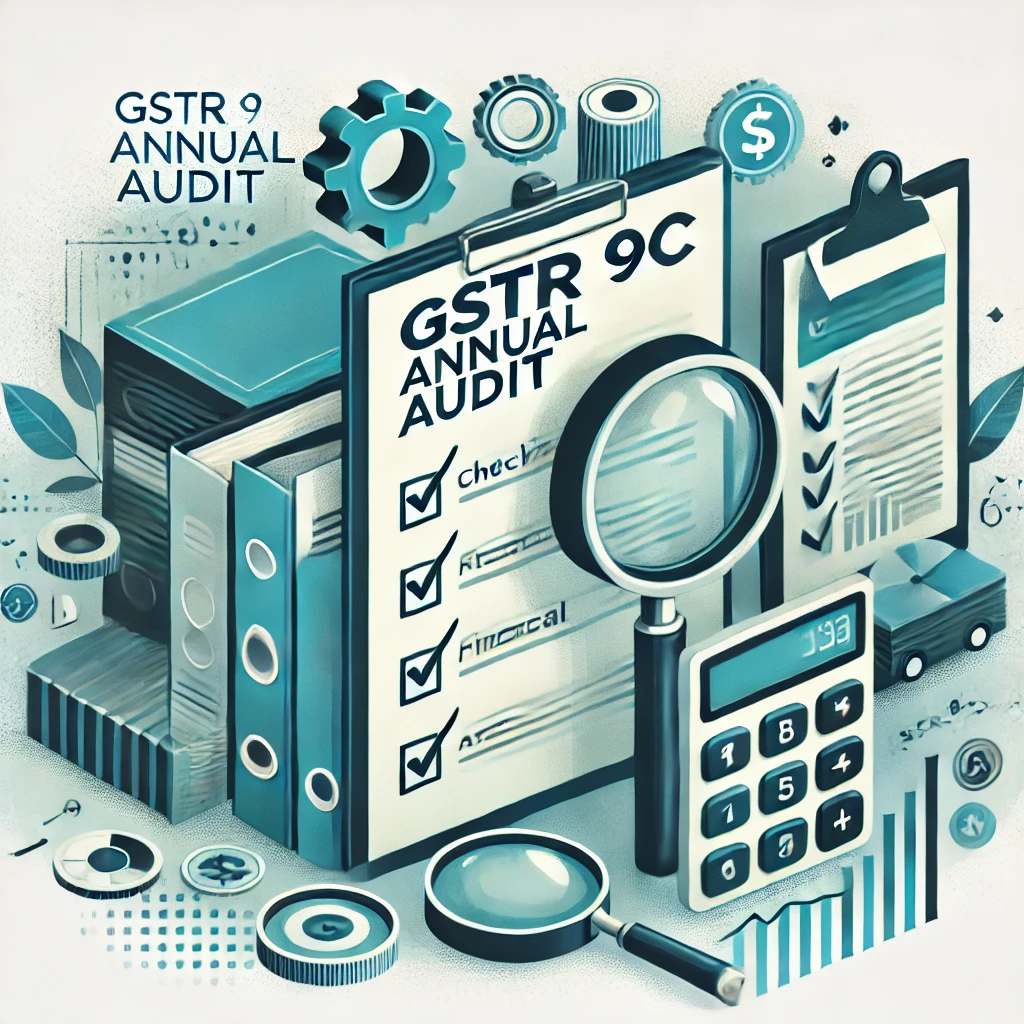Start Business
Start Business
Registration & License
Registration & License
Trademark Filing
Trademark Filing
Goods & Service Tax
Goods & Service Tax
Income Tax
Income Tax
MCA Services
Tender Registration
Tender Registration
Others
GST Reconciliation Statement Filing in India – Ensure Compliance & Accurate Reporting
Best & Reasonable Plans
Smart solutions,fair prices - your success starts with the Innovative solutions, competitive pricing – your journey to success begins with the perfect balance for growth!

OVERVIEW
GSTR-9C is a reconciliation statement and certification required for businesses with an annual turnover exceeding ₹5 crore. It reconciles the financial statements (books of accounts) with the GST returns filed during the year, such as GSTR-1, GSTR-3B, and GSTR-9. This process ensures accuracy, transparency, and compliance with GST laws. GSTR-9C must be certified by a Chartered Accountant (CA) or Cost Accountant, making it a critical document for GST audits and maintaining your business’s credibility with tax authorities.
Key Features of Filing GSTR-9C
- • Reconciliation of Financial and GST Data : GSTR-9C ensures that your financial statements match the data filed in GST returns, minimizing discrepancies and errors.
- • CA Certification for Accuracy : The statement must be certified by a CA or Cost Accountant, ensuring compliance and reducing the risk of penalties or notices.
- • Audit Readiness and Compliance : Filing GSTR-9C prepares your business for GST audits by providing a clear and reconciled view of your financial and GST data.
What is the Difference Between GSTR-9 and GSTR-9C?
GSTR-9 and GSTR-9C serve different purposes in the GST annual filing process. GSTR-9 is an annual return that consolidates all the monthly or quarterly GST returns (GSTR-1, GSTR-3B) filed during the financial year, providing a summary of sales, purchases, input tax credit (ITC) claims, and tax payments. On the other hand, GSTR-9C is a reconciliation statement and certification required for businesses with a turnover exceeding ₹5 crore. It reconciles the financial statements (books of accounts) with the data filed in GSTR-9 and must be certified by a Chartered Accountant (CA) or Cost Accountant. While GSTR-9 is a self-declaration, GSTR-9C ensures accuracy and compliance through professional verification, making it a critical document for GST audits.
Common Challenges in GSTR-9C Filing
Data Reconciliation Issues
One of the biggest challenges in GSTR-9C filing is reconciling financial statements (books of accounts) with GST returns (GSTR-1, GSTR-3B, and GSTR-9). Discrepancies in sales, purchases, or input tax credit (ITC) claims can lead to errors, requiring significant time and effort to resolve.
Complex Certification Process
GSTR-9C requires certification by a Chartered Accountant (CA) or Cost Accountant, which involves a detailed review of financial and GST data. This process can be time-consuming and may reveal inconsistencies that need to be corrected before filing.
Lack of Proper Documentation
Many businesses struggle with incomplete or missing records, such as invoices, expense details, or bank statements. Poor documentation makes it difficult to reconcile data accurately and can delay the filing process.
Silent Features
Auto-Populated Data from GSTR-9
Detailed ITC Reconciliation
Auditor’s Certification
Turnover-Based Exemption
Offline Tool for Preparation
Amendments and Adjustments Section
Advantages of filing GSTR-9
- Professional Certification Adds Credibility : The requirement for CA or Cost Accountant certification ensures that your financial and GST data is professionally verified, enhancing your business’s credibility with authorities and stakeholders.
- Identifies Hidden Discrepancies : The detailed reconciliation process in GSTR-9C helps uncover hidden discrepancies between books of accounts and GST returns, allowing you to address issues proactively.
- Streamlines Future GST Filings : By resolving discrepancies during GSTR-9C filing, businesses can streamline their monthly/quarterly GST filings (GSTR-1 and GSTR-3B) for the next financial year.
- Reduces Litigation Risks : Accurate reconciliation and certification reduce the risk of disputes with tax authorities, minimizing the chances of litigation or penalties.
- Improves Internal Financial Controls : The process of preparing GSTR-9C encourages businesses to strengthen their internal financial controls and record-keeping practices, leading to better financial management.
- Facilitates Better Tax Planning : The insights gained from GSTR-9C reconciliation help businesses plan their taxes more effectively, optimizing input tax credit (ITC) claims and reducing tax liabilities.
Documents Required
Audited Financial Statements
GST Returns (GSTR-1, GSTR-3B, GSTR-9)
Purchase and Sales Registers
Input Tax Credit (ITC) Records
Bank Statements
CA Certification Report
Step-by-Step Guide For GSTR-9C Filing
Here are 5 steps to complete your GSTR-9C Filing
Step 1
Gather Required Documents
Step 2
Reconcile Financial Statements with GST Returns
Step 3
Prepare the Reconciliation Statement
Step 4
Obtain CA Certification
Step 5
Upload and Submit GSTR-9C
Empowering Your Business to Stay Ahead


Ensuring excellence in every aspect of business operations

Helping businesses to stay ahead of the competition effectively

Providing expert guidance for long-term business growth





